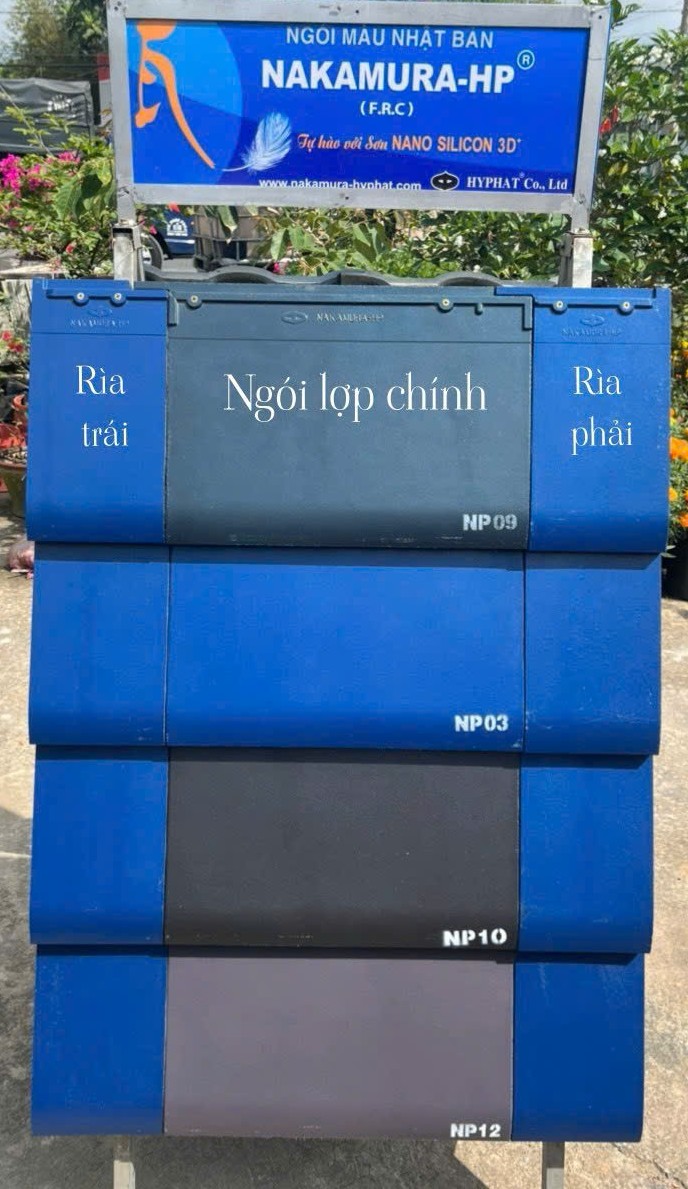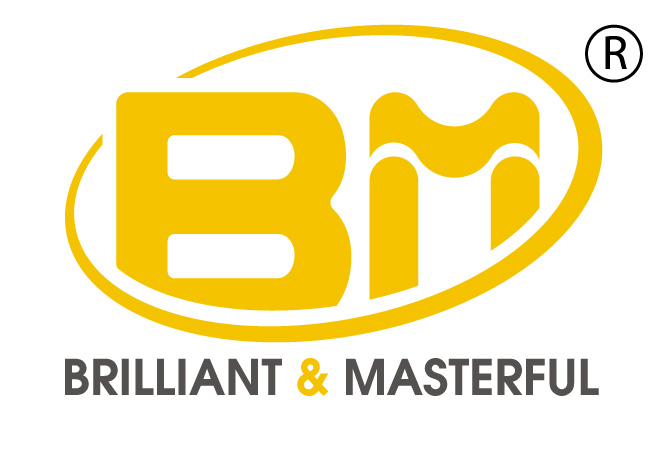Cognitive Automation: What You Need to Know
WorkFusion and NEC Partner to Bring AI-driven Robotic Process Automation to Global Markets: Press Releases
AI Agents are cognitive tasks that adapt and learn from your data, make appropriate decisions, and responsibly take action across systems. Another key investment is related to language—spanning from natural language understanding to natural language generation. The business applications of the future will be less form-based and more interaction-based. With 20% of the searches performed with mobile being voice-based, conversational interactions are set to become increasingly pervasive even in an enterprise context.
“We want to enable users ultimately to bring the model of their choice,” he said. That could even extend to Google, which Apple competes with when it comes to smartphone operating systems. RPA has been around for over 20 years and the technology is generally based on use cases where data is structured, such as entering repetitive information into an ERP when processing invoices. LinkedIn is launching new AI tools to help you look for jobs, write cover letters and job applications, personalize learning, and a new search experience.
“The shift from basic RPA to cognitive automation unlocks significant value for any organization and has notable implications across a number of areas for the CIO,” said James Matcher, partner in the technology consulting practice at EY. Anyone who has been following the Robotic Process Automation (RPA) revolution that is transforming enterprises worldwide has also been hearing about how artificial intelligence (AI) can augment traditional RPA tools to do more than just RPA alone can achieve. From your business workflows to your IT operations, we got you covered with AI-powered automation.
For example, in an accounts payable workflow, cognitive automation could transform PDF documents into machine-readable structure data that would then be handed to RPA to perform rules-based data input into the ERP. “We’re aiming to enable the creation of more sophisticated customer service solutions and the acceleration of AI-first technologies that deliver return on investment,” Heltewig said. Philipp Heltewig, who was CIO at marketing firm Sitecore before it was sold to private equity group EQT in 2016, joined forces with Sascha Poggemann and Benjamin Mayr eight years ago to found Cognigy, a customer service automation startup.
For maintenance professionals in industries relying on machinery, cognitive automation predicts maintenance needs. It minimizes equipment downtime, optimizes performance, and allowing teams to proactively address issues before they escalate. It can seamlessly integrate with existing systems and software, allowing it to handle large volumes of data and tasks efficiently, making it suitable for businesses of varying sizes and needs. Levity is a tool that allows you to train AI models on images, documents, and text data. You can rebuild manual workflows and connect everything to your existing systems without writing a single line of code.If you liked this blog post, you’ll love Levity. You can also check out our success stories where we discuss some of our customer cases in more detail.
You can foun additiona information about ai customer service and artificial intelligence and NLP. They speed up the onboarding of new workers and enable them to deliver better service in less time to delight more of your customers. Claims processing, one of the most fundamental operations in insurance, can be largely optimized by cognitive automation. Many insurance companies have to employ massive teams to handle claims in a timely manner and meet customer expectations. Insurance businesses can also experience sudden spikes in claims—think about catastrophic events caused by extreme weather conditions.
Cognitive automation has the potential to completely reorient the work environment by elevating efficiency and empowering organizations and their people to make data-driven decisions quickly and accurately. “With cognitive automation, CIOs can move the needle to high-value, high-frequency automations and have a bigger impact on the bottom line,” said Jon Knisley, principal of automation and process excellence at FortressIQ. Basic cognitive services are often customized, rather than designed from scratch.
How is RPA Software user experience?
The company also launched new AI Agents to manage complex cognitive tasks and automate more than ever before possible across every system in an enterprise. Generative AI has the potential to revolutionize the entire customer operations function, improving the customer experience and agent productivity through digital self-service and enhancing and augmenting agent skills. The technology has already gained traction in customer service because of its ability to automate interactions with customers using natural language. It also reduced agent attrition and requests to speak to a manager by 25 percent.
While many of the trend-based judgment decisions will need human input, we see that AI will reduce the need for some processing exceptions by predicting the best decision. These predictions can be automated based on the confidence level or may need human-in-the-loop to improve the models when the confidence level does not meet the threshold for automation. Similar to spoken language, unstructured data is difficult or even impossible to interpret by algorithms. Most companies struggle to extract information from unstructured data, although the potential to achieve zero-touch operations lies in their ability to handle it. This class of data further consists of subgroups; unstructured images in document form, unstructured texts, unstructured images in picture form, unstructured audio, and unstructured video. Each of the subgroups might pose different challenges or possibly different technical solutions when it comes to extraction.
Most businesses are only scratching the surface of cognitive automation and are yet to uncover their full potential. A cognitive automation solution may just be what it takes to revitalize resources and take operational performance to the next level. In addition, cognitive automation tools can understand and classify different PDF documents. This allows us to automatically trigger different actions based on the type of document received. Through cognitive automation, it is possible to automate most of the essential routine steps involved in claims processing.
Deliver fast, precise and flexible robot systems with better coordination between your robots and the surrounding automation. In interviews and at company conferences last year, Microsoft and Google executives touted how they were putting AI at the center of their business strategies. On a conference call on May 4, 2023, he told investors that generative AI still had “a number of issues that need to be sorted.” Apple would only deploy chatbots and other generative AI tech on a “very thoughtful basis,” Cook said at the time.
IBM Consulting’s extreme automation consulting services enable enterprises to move beyond simple task automations to handling high-profile, customer-facing and revenue-producing processes with built-in adoption and scale. This integration leads to a transformative solution that streamlines processes and simplifies workflows to ultimately improve the customer experience. Since 1989, Automated Control Logic, Inc. has been the source clients have relied on for quality and expertise with building automation controls, installation, and service.
Some examples of mature cognitive automation use cases include intelligent document processing and intelligent virtual agents. While RPA systems follow predefined rules and instructions, cognitive automation solutions can learn from data patterns, adapt to new scenarios, and make intelligent decisions, enhancing their problem-solving capabilities. Within a company, cognitive process automation streamlines daily operations for employees by automating repetitive tasks. It enables smoother collaboration between teams, and enhancing overall workflow efficiency, resulting in a more productive work environment. Traditional RPA is mainly limited to automating processes (which may or may not involve structured data) that need swift, repetitive actions without much contextual analysis or dealing with contingencies. In other words, the automation of business processes provided by them is mainly limited to finishing tasks within a rigid rule set.
We congratulate Cognigy on their funding and look forward to further innovation,” said Nick Allgaier, Product Manager “Digital Assistants” Lufthansa Group. We are proud to support Cognigy’s global growth and mission to revolutionize conversation automation for the enterprise. This investment aligns perfectly with our Eurazeo Growth strategy of supporting European AI champions and scaling them up to become global category leaders,” added Romain Mombert, Director of Eurazeo Growth. The integration of different AI features with RPA helps organizations extend automation to more processes, making the most of not only structured data, but especially the growing volumes of unstructured information. Unstructured information such as customer interactions can be easily analyzed, processed and structured into data useful for the next steps of the process, such as predictive analytics, for example. This category involves decision-making based on past patterns, such as the decision to write-off short payments from customers.
What are the most common words describing RPA Software?
IBM’s cognitive Automation Platform is a Cloud based PaaS solution that enables Cognitive conversation with application users or automated alerts to understand a problem and get it resolved. It is made up of two distinct Automation areas; Cognitive Automation and Dynamic Automation. These are integrated by the IBM Integration Layer (Golden Bridge) which acts as the ‘glue’ between the two.
Individuals focused on low-level work will be reallocated to implement and scale these solutions as well as other higher-level tasks. The deployment of generative AI and other technologies could help accelerate productivity growth, partially compensating for declining employment growth and enabling overall economic growth. In some cases, workers will stay in the same occupations, but their mix of activities will shift; in others, workers will need to shift occupations.
For lower-wage occupations, making a case for work automation is more difficult because the potential benefits of automation compete against a lower cost of human labor. Additionally, some of the tasks performed in lower-wage occupations are technically difficult to automate—for example, manipulating fabric or picking delicate fruits. Some labor economists have observed a “hollowing out of the middle,” and our previous models have suggested that work automation would likely have the biggest midterm impact on lower-middle-income quintiles. For example, the life sciences and chemical industries have begun using generative AI foundation models in their R&D for what is known as generative design. Foundation models can generate candidate molecules, accelerating the process of developing new drugs and materials.
This article will explain to you in detail which cognitive automation solutions are available for your company and hopefully guide you to the most suitable one according to your needs. Processing claims is perhaps one of the most labor-intensive tasks faced by insurance company employees and thus poses an operational burden on the company. Many of them have achieved significant optimization of this challenge by adopting cognitive automation tools. When introducing automation into your business processes, consider what your goals are, from improving customer satisfaction to reducing manual labor for your staff. Consider how you want to use this intelligent technology and how it will help you achieve your desired business outcomes. Businesses are increasingly adopting cognitive automation as the next level in process automation.
Using an off-the-shelf foundation model, researchers can cluster similar images more precisely than they can with traditional models, enabling them to select the most promising chemicals for further analysis during lead optimization. Our analysis did not account for the increase in application quality and the resulting boost in productivity that generative AI could bring by improving code or enhancing IT architecture—which can improve productivity across the IT value chain. However, the quality of IT architecture still largely depends on software architects, rather than on initial drafts that generative AI’s current capabilities allow it to produce. This analysis may not fully account for additional revenue that generative AI could bring to sales functions. For instance, generative AI’s ability to identify leads and follow-up capabilities could uncover new leads and facilitate more effective outreach that would bring in additional revenue.
But when complex data is involved it can be very challenging and may ask for human intervention. Key distinctions between robotic process automation (RPA) vs. cognitive automation include how they complement human workers, the types of data they work with, the timeline for projects and how they are programmed. Generative AI can substantially increase labor productivity across the economy, but that will require investments to support workers as they shift work activities or change jobs. Generative AI could enable labor productivity growth of 0.1 to 0.6 percent annually through 2040, depending on the rate of technology adoption and redeployment of worker time into other activities. Combining generative AI with all other technologies, work automation could add 0.5 to 3.4 percentage points annually to productivity growth.
This research is the latest in our efforts to assess the impact of this new era of AI. It suggests that generative AI is poised to transform roles and boost performance across functions such as sales and marketing, customer operations, and software development. In the process, it could unlock trillions of dollars in value across sectors from banking to life sciences. Available today is the Service Operations Solution Accelerator, with capabilities to automate order management, returns processing, ticket management, and service Q&A processes for enhanced worker productivity and improved customer experience. Cognitive automation creates new efficiencies and improves the quality of business at the same time.
Taking into account the latest metrics outlined below, these are the current
rpa software market leaders. Market leaders are not the overall leaders since market
leadership doesn’t take into account growth rate. At Blue Prism® we developed Robotic Process Automation software to provide businesses and organizations like yours with a more agile virtual workforce.
For the purposes of this report, we define generative AI as applications typically built using foundation models. These models contain expansive artificial neural networks inspired by the billions of neurons connected in the human brain. Foundation models are part of what is called deep learning, a term that alludes to the many deep layers within neural networks. Deep learning has powered many of the recent advances in AI, but the foundation models powering generative AI applications are a step-change evolution within deep learning. Unlike previous deep learning models, they can process extremely large and varied sets of unstructured data and perform more than one task. Cognigy’s AI-first approach uses both Conversational and Generative AI to deliver pre-trained AI Agents that resolve high-volume customer requests at scale.
Our analysis captures only the direct impact generative AI might have on the productivity of customer operations. Generative AI could have an impact on most business functions; however, a few stand out when measured by the technology’s impact as a share of functional cost (Exhibit 3). Our analysis of 16 business functions identified just four—customer operations, marketing and sales, software engineering, and research and development—that could account for approximately 75 percent of the total annual value from generative AI use cases. To accelerate the development of your AI-powered solutions, our new Solution Accelerators offer AI Agent blueprints, process templates, and step-by-step solution and training guides. Think of creating dedicated assistants that can search your knowledge bases, kick off AI-powered automation, and engage with other AI Agents to complete high-cognition tasks like order management, returns processing, and more.
So when we’re doing human-feedback learning, we teach Pi to give an answer with EQ. Because it depends on the purpose of work you’re about to find at the end of your cognitive automation journey. Today, companies need access to numerous sources as making assumptions is based on zettabytes of raw data. The promise of automation seems to be focused on making processes touchless — devoid of human interaction and input.
In an era of rising production demands, manufacturers must anticipate the requirements of tomorrow by embracing smart, flexible solutions today. Our integrated robot solutions provide a streamlined path to more interconnected and intelligent deployments that can create efficiencies never before possible and foster innovation in new ways. SAN FRANCISCO — Apple officially launched itself into the artificial intelligence arms race, announcing a deal with ChatGPT maker OpenAI to use the company’s technology in its products and showing off a slew of its own new AI features. Cognitive automation expands the number of tasks that RPA can accomplish, which is good.
Overall, cognitive software platforms will see investments of nearly $2.5 billion this year. Spending on cognitive-related IT and business services will be more than $3.5 billion and will enjoy a five-year CAGR of nearly 70%. “RPA is a great way to start automating processes and cognitive automation is a continuum of that,” said Manoj Karanth, vice president and global head of data science and engineering at Mindtree, a business consultancy.
VIDEO: Embracing the Future of Work In The Era of Cognitive Automation
Intelligent document processing (IDP) software enables companies to automate processing unstructured data such as documents, forms, and images and convert them into usable structured data. Accounting departments can also benefit from the use of cognitive automation, said Kapil Kalokhe, senior director of business advisory services at Saggezza, a global IT consultancy. For example, accounts payable teams can automate the invoicing process by programming the software bot to receive invoice information — from an email or PDF file, for example — and enter it into the company’s accounting system. In this example, the software bot mimics the human role of opening the email, extracting the information from the invoice and copying the information into the company’s accounting system. If your organization wants a lasting, adaptable cognitive automation solution, then you need a robust and intelligent digital workforce. That means your digital workforce needs to collaborate with your people, comply with industry standards and governance, and improve workflow efficiency.
Pharma companies that have used this approach have reported high success rates in clinical trials for the top five indications recommended by a foundation model for a tested drug. This success has allowed these drugs to progress smoothly into Phase 3 trials, significantly accelerating the drug development process. Notably, the potential value of using generative AI for several functions that were prominent in our previous sizing of AI use cases, including manufacturing and supply chain functions, is now much lower.5Pitchbook. This is largely explained by the nature of generative AI use cases, which exclude most of the numerical and optimization applications that were the main value drivers for previous applications of AI. In this section, we highlight the value potential of generative AI across business functions. Our updates examined use cases of generative AI—specifically, how generative AI techniques (primarily transformer-based neural networks) can be used to solve problems not well addressed by previous technologies.
Foundation models and generative AI can enable organizations to complete this step in a matter of weeks. Banking, a knowledge and technology-enabled industry, has already benefited significantly from previously existing applications of artificial intelligence in areas such as marketing and customer operations.1“Building the AI bank of the future,” McKinsey, May 2021. To grasp what lies ahead requires an understanding of the breakthroughs that have enabled the rise of generative AI, which were decades in the making.
Corporate transformation was driven by organic customer demand and fulfilled by people who took the time to sift through trends and marketing research, and then used their years of experience to plan out the optimal supply lines and resource allocations. Our clientele include Fortune 500 companies, schools, universities, hedge funds, hospitals, manufacturing facilities, municipalities and commercial real estate owners to name just a few. Aside from Big Tech incumbents, many, many startups offer AI-powered products to automate basic call center tasks. As a result, generative AI is likely to have the biggest impact on knowledge work, particularly activities involving decision making and collaboration, which previously had the lowest potential for automation (Exhibit 10). Our estimate of the technical potential to automate the application of expertise jumped 34 percentage points, while the potential to automate management and develop talent increased from 16 percent in 2017 to 49 percent in 2023.
However, this rigidity leads RPAs to fail to retrieve meaning and process forward unstructured data. IA is capable of advanced data analytics techniques to process and interpret large volumes of data quickly and accurately. This enables organizations https://chat.openai.com/ to gain valuable insights into their processes so they can make data-driven decisions. And using its AI capabilities, a digital worker can even identify patterns or trends that might have gone previously unnoticed by their human counterparts.
How big is Cognitive Automation Market? – openPR
How big is Cognitive Automation Market?.
Posted: Wed, 05 Jun 2024 06:52:00 GMT [source]
Our deep industry knowledge combined with expertise on multiple technologies helps provide best-in-class solutions to meet the client’s business needs. For over a decade, we have been working as an award-winning partner to enterprises, technology challengers and Fortune 1000 companies. Our innovative solutions have helped contribute to the success of some of the world’s leading brands by transforming their business to deliver better outcome. We are an advanced analytics solutions provider, passionate about helping clients to disrupt rather than being disrupted. We pride ourselves in delivering a full spectrum of IT solutions and services, helping you make the shift to the next-level of digital experiences.
IBM Cloud Pak® for Automation provide a complete and modular set of AI-powered automation capabilities to tackle both common and complex operational challenges. To manage this enormous data-management demand and turn it into actionable planning and implementation, companies must have a tool that provides enhanced market prediction and visibility. But as those upward trends of scale, complexity, and pace continue to accelerate, it demands faster and smarter decision-making. Join us for an exclusive 4-day program full of inspiration, learning and connections.
According to customer reviews, most common company size for rpa software customers is 1,001+ employees. For an average Automation solution, customers with 1,001+ employees make up 44% of total customers. RPA (Robotic Process Automation) technology enables bots that mimic repetitive human actions on graphical user interfaces (GUI). However bots have been growing more capable and taking on more complex tasks requiring cognitive skills such as pattern recognition and decision making.
This makes it easier for business users to provision and customize cognitive automation that reflects their expertise and familiarity with the business. In practice, they may have to work with tool experts to ensure the services are resilient, are secure and address any privacy requirements. Most importantly, this platform must be connected outside and in, must operate in real-time, and be fully autonomous. It must also be able to complete its functions with minimal-to-no human intervention on any level. All of these create chaos through inventory mismatches, ongoing product research and development, market entry, changing customer buying patterns, and more. This occurs in hyper-competitive industry sectors that are being constantly upset by startups and entrepreneurs who are more adaptable (or simply lucky) in how they meet ongoing consumer demand.
During a time of increasingly complex energy demands and standards, our experienced management team and skilled workforce proudly maintain an ongoing and continually expanding reputation for success. Dedicated team of afterhours support technicians ( including company principle ) are available anytime / anywhere. Are you seeking robot solutions that deliver value quickly, while serving as powerful assets in navigating the disruption in your industry?
Template-free data extraction
We’re confident that once workers see the power of AI-powered automations, they’ll want to expand and scale to automate more and more use cases. We also announced “bring your own LLM” capabilities to connect to, govern, and control third-party LLMs, and, coming soon, connectors to custom models built on AWS. These enhanced AI capabilities allow business users to automate more processes across any system and support developers of all skill levels as they build custom AI tools grounded in your business data. Facilitated by AI technology, the phenomenon of cognitive automation extends the scope of deterministic business process automation (BPA) through the probabilistic automation of knowledge and service work.
“The ability to handle unstructured data makes intelligent automation a great tool to handle some of the most mission-critical business functions more efficiently and without human error,” said Prince Kohli, CTO of Automation Anywhere. He sees cognitive automation improving other areas like healthcare, where providers must handle millions of forms of all shapes and sizes. Employee time would be better spent caring for people rather than tending to processes and paperwork. RPA primarily deals with structured data and predefined rules, whereas cognitive automation can handle unstructured data, making sense of it through natural language processing and machine learning. Cognitive automation works by combining the power of artificial intelligence (AI) and automation to enable systems to perform tasks that typically require human intelligence.
For example, a cognitive automation application might use a machine learning algorithm to determine an interest rate as part of a loan request. Our AI + Automation Enterprise System enables every customer to automate the impossible. It starts with the industry-leading automation platform Chat GPT so customers can securely take action across their enterprise systems. Our trusted AI layer then helps customers make decisions based on their enterprise data. And, our AI-powered solutions help accelerate time-to-market for customer service, finance, healthcare, and other solutions.
Crucially, productivity and quality of service improved most among less-experienced agents, while the AI assistant did not increase—and sometimes decreased—the productivity and quality metrics of more highly skilled agents. This is because AI assistance helped less-experienced agents communicate using techniques similar to those of their higher-skilled counterparts. Nintex RPA is the easiest way to create and run automated tasks for your organization. Nintex RPA lets you unlock the potential of your business by automating repetitive, manual business processes. From projects in Excel to CRM systems, Nintex RPA enables enterprises to leverage trained bots to quickly automate mundane tasks more efficiently. Using Nintex RPA, enterprises can leverage trained bots to quickly and cost-effectively automate routine tasks without the use of code in an easy-to-use drag and drop interface.
The Justice Department and the Federal Trade Commission recently struck a deal that would enable greater oversight of big partnerships between tech companies. And the FTC is already probing whether Microsoft designed a $650 million deal with the AI company Inflection to skirt government antitrust reviews. The company is already battling a Justice Department antitrust lawsuit that alleges it wields an illegal smartphone monopoly. Antitrust enforcers have been wary of the ways that tech companies use their deep war chests to strike deals that threaten innovation.
By comparison, the bulk of potential value in high tech comes from generative AI’s ability to increase the speed and efficiency of software development (Exhibit 5). In other cases, generative AI can drive value by working in partnership with workers, augmenting their work in ways that accelerate their productivity. Its ability to rapidly digest mountains of data and draw conclusions from it enables the technology to offer insights and options that can dramatically enhance knowledge work.
“We are on a mission to redefine the standards of customer service by leveraging the transformative power of Conversational AI and GenAI. Our collaboration with Cognigy is a testament to our commitment to pioneering solutions that are at the forefront of technology and meet our members’ needs. The integration of Cognigy’s technology into our service framework is a game-changer, setting a new benchmark for excellence in the industry,” said Jack Roberts, Director of GMS Technology & Applications at TechStyleOS. We’ve also incorporated retrieval-augmented generation (RAG) to mitigate hallucinations and enhance the accuracy and reliability of generative AI models using enterprise data like knowledge articles and product catalogs. And, we’re also including security, data, privacy, and responsible use guard rails in AI Agents with real-time monitoring, traceability, auditability, and PII masking. AlphaChat is a cognitive bot tool allowing companies to build Conversational AI bots for their website.
- Technology has been changing the clock speed of the enterprise and continues to challenge the human’s capacity to deal with information.
- Generative AI could have an impact on most business functions; however, a few stand out when measured by the technology’s impact as a share of functional cost (Exhibit 3).
- The McKinsey Global Institute began analyzing the impact of technological automation of work activities and modeling scenarios of adoption in 2017.
Pretrained foundation models that underpin generative AI, or models that have been enhanced with fine-tuning, have much broader areas of application than models optimized for a single task. They can therefore accelerate time to market and broaden the types of products to which generative design can be applied. For now, however, foundation models lack the capabilities to help design products across all industries.
However, workers will need support in learning new skills, and some will change occupations. If worker transitions and other risks can be managed, generative AI could contribute substantively to economic growth and support a more sustainable, inclusive world. By augmenting RPA with cognitive technologies, the software can take into account a multitude of risk factors and intelligently assess them. This implies a significant decrease in false positives and an overall enhanced reliability of autonomous transaction monitoring. ML-based cognitive automation tools make decisions based on the historical outcomes of previous alerts, current account activity, and external sources of information, such as customers’ social media. Both cognitive automation and intelligent process automation fall within the category of RPA augmented with certain intelligent capabilities, where cognitive automation has come to define a sub-set of AI implementation in the RPA field.
The “earliest” scenario flexes all parameters to the extremes of plausible assumptions, resulting in faster automation development and adoption, and the “latest” scenario flexes all parameters in the opposite direction. We also surveyed experts in the automation of each of these capabilities to estimate automation technologies’ current performance level against each of these capabilities, as well as how cognitive automation company the technology’s performance might advance over time. Specifically, this year, we updated our assessments of technology’s performance in cognitive, language, and social and emotional capabilities based on a survey of generative AI experts. These examples illustrate how technology can augment work through the automation of individual activities that workers would have otherwise had to do themselves.
It’s simply not economically feasible to maintain a large team at all times just in case such situations occur. This is why it’s common to employ intermediaries to deal with complex claim flow processes. These technologies allow cognitive automation tools to find patterns, discover relationships between a myriad of different data points, make predictions, and enable self-correction.



 NGÓI NAKAMURA SÓNG NHỎ
NGÓI NAKAMURA SÓNG NHỎ NGÓI NAKAMURA SÓNG LỚN
NGÓI NAKAMURA SÓNG LỚN NGÓI PHẲNG NAKAMURA
NGÓI PHẲNG NAKAMURA








